Plants grow in soil. Soil is a vital resource for plants, providing the nutrients they need to survive and thrive. When wet, though, soil can become heavy and difficult to move. This can lead to landslides and flooding, damaging or even killing plants. Heavy rain and flooding can cause plants to become damaged, both physically and from loss of nutrients.
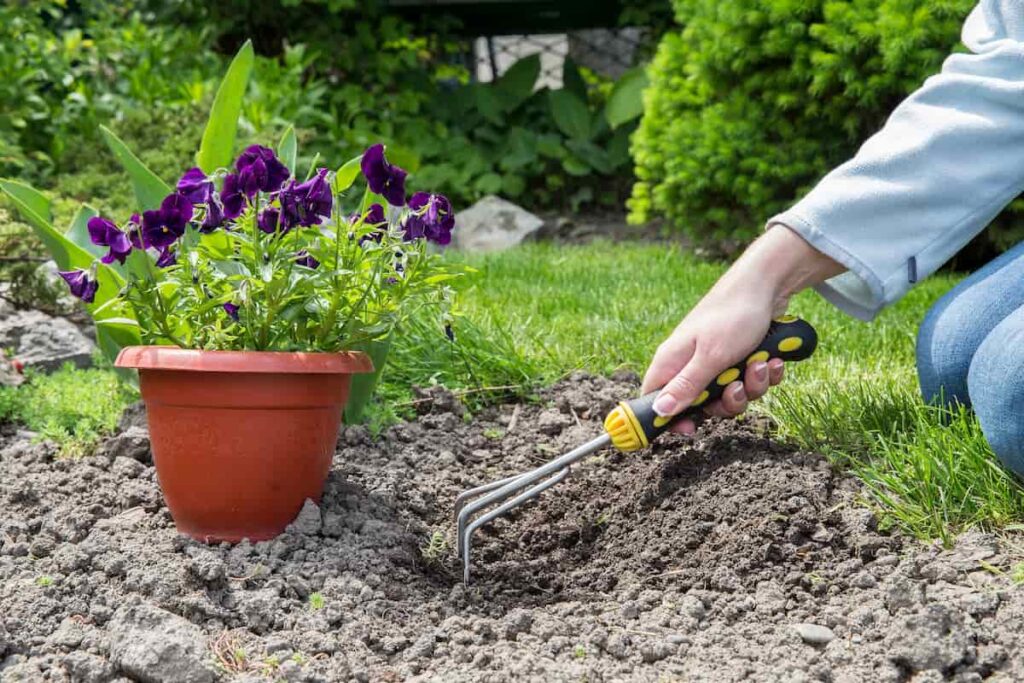
In some cases, the water can carry away soil and debris, leaving plants exposed to infection and decay. To protect your plants from potential damage, take some simple precautions, and also, you should know recovering them after heavy rain is essential for their long-term health.
How to protect plants from heavy rains and water damage
Spread a fabric over the rows of the plant
Heavy rains can cause flooding in low-lying areas and damage plants. The soil can also be washed away, leaving the plants vulnerable to disease or infestation. To protect your plants from heavy rains, spread a fabric plant covering above the plant rows. This will help to protect the plants from wet soil and water droplets that can fall on them.
The fabric should also be wide enough not to restrict the flow of air and light through the plant canopy. Fabric can be made of any sturdy material, such as cotton, polyester, or hemp. They should be large enough to cover the entire plant row and securely tied down.
Cover individual plants with pots or buckets
Covering individual plants with pots or buckets can help protect them from heavy rains. This is especially important if the plants are young or not well-fitted for the rainy environment. One of the best methods for protecting plants from heavy rain and water damage is to cover individual plants with pots or buckets. This will help keep the plants dry and reduce the amount of water runoff can absorb. Additionally, this method can help prevent insects and other pests from entering the plants, leading to increased yields.
Stake the plants
Heavy rains can cause stems to break on stake plants, limiting the plant’s ability to absorb water and damaging the roots. To prevent this from happening, stake the plants so that their stems are not touching the ground. This will also allow them better to distribute water throughout their root system during heavy rainfalls. This will help keep the plants upright and reduce the chances of them being blown over.
In case you missed it: 12 Common Greenhouse Gardening Problems and Solutions: A Beginners Guide
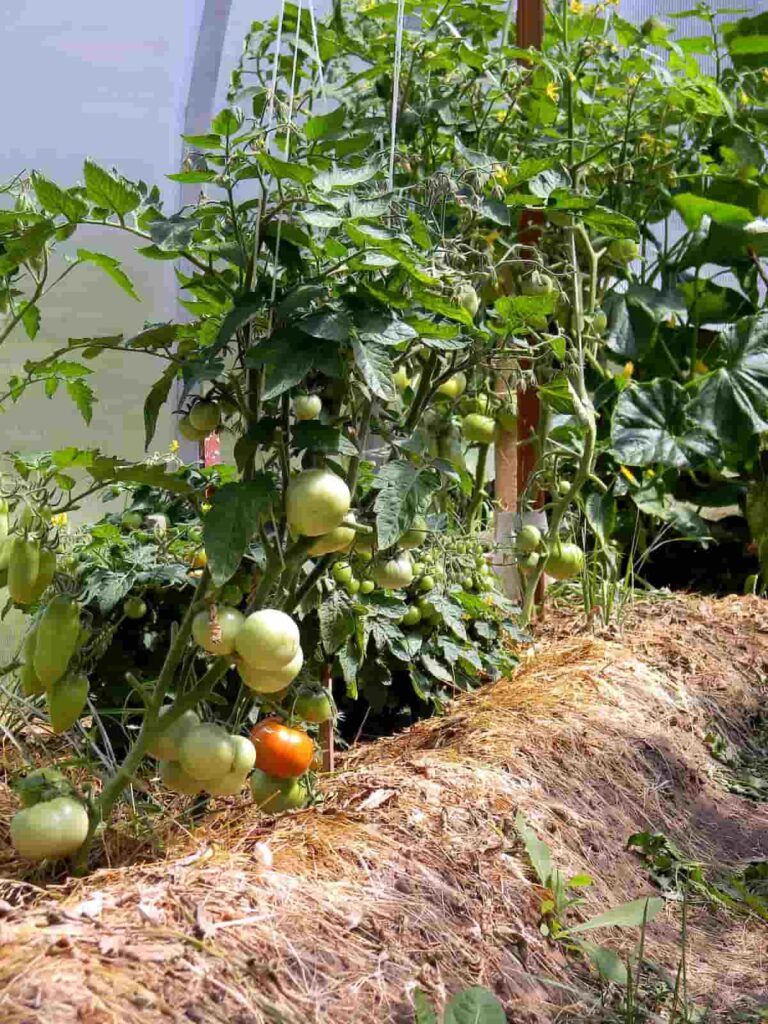
Avoid planting trees near your plants
You should keep plants at least three feet away from trees. The branches of a tree can easily break down, and the whole tree could even fall if the wind is strong enough.
Lay mulch around the base of your plants
When it comes to protecting plants from heavy rains, lay mulch around the base of your plants to help prevent soil erosion. Keep tree roots moist by watering them regularly and adding a layer of organic mulch around their base. This will help keep the soil wet and prevent it from becoming saturated. Mulch also helps to keep weeds down and can enhance the growth of beneficial plants.
In case you missed it: 12 Tips to Keep Your Houseplants Healthy: Ideas for Beginners

Plant cover plants
Plant cover plants can help protect plants from heavy rains. These plants are typically grown in areas where rain is a problem, such as during the monsoon season. Cover plants trap and hold water, helping to prevent runoff and flooding. They can also help to improve the soil’s overall drainage and nutrient content. Many different types of cover plants can be used for protection. The type of cover plant chosen will depend on the region where it will be used and the weather conditions.
Cover plants should be planted early in the season to have time to grow and take up water before the rain begins to fall. Once planted, care should be taken to keep them well-watered and weed-free to provide maximum protection to plants below them. Select a cover plant that is adapted to your location. Make sure to research the cover plant varieties available in your area before selecting one.
Select a cover plant that will grow quickly in your location. You want the cover plant to reach maturity before the rain hits, so choose something that grows quickly, like green manure or rye. Choose a cover plant that will suppress weeds. Weeds can take over an exposed field after rain, and they can be difficult to control with herbicides. Choose a cover plant that will suppress weeds, like hairy vetch or crimson clover.
Leave some plant residue on the soil after harvesting for extra cover
After harvesting plants, you should leave residues on the soil that can help protect the plants from heavy rains. By leaving some plant residue on the soil, you are helping to create a barrier between the plant and water. This will help reduce runoff and flooding, which can damage your plants and the surrounding area. This also helps to provide additional food for microbial activity, which can help protect the plants from disease.
In case you missed it: How to Improve Your Clay Soil Organically: By Compost, Mulch, and Cover Crop
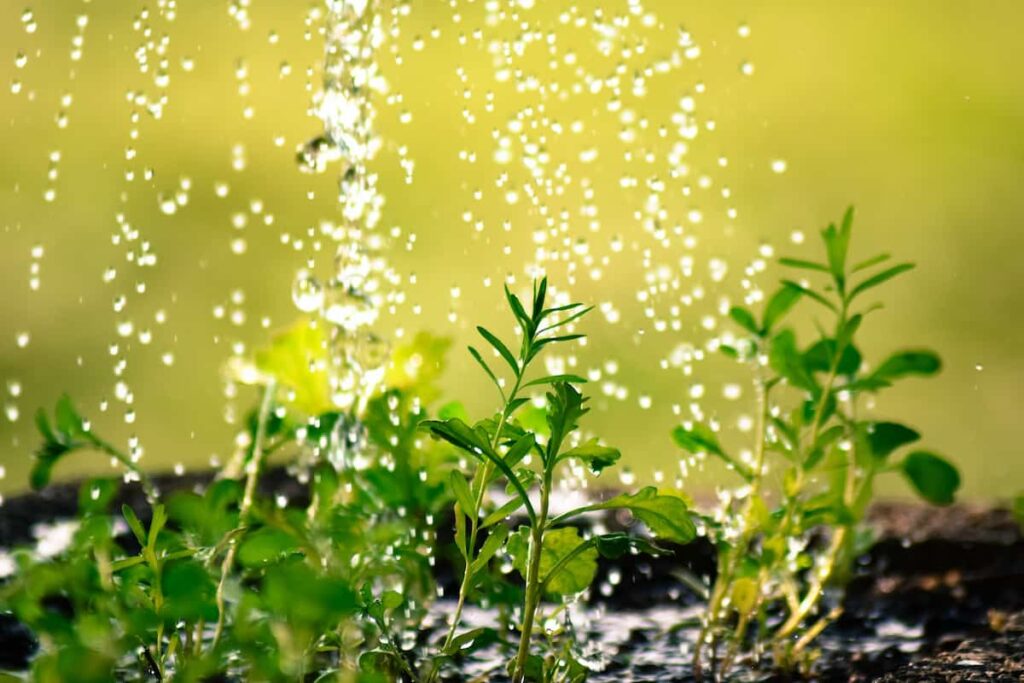
Cut a drainage ditch at the end of each row
Protecting your plants from water damage is important if you live in an area with heavy rainfall. Heavy rains can cause water to quickly flow down a drainage ditch, carrying away any soil or plant debris in its wake. This can lead to flooding and damage to your plants. Cutting a drainage ditch at the end of each row is important to protect them from this damage.
This will help to prevent water from flowing down the row and overwhelming your plants. To protect plants from heavy rains, dig ditches between plant rows. Ditches should be at least 6 inches deep and 18 inches wide. Place rocks or bricks at the bottom of the ditch to help reduce water runoff.
Redirect water flows with dikes around your plants
Dikes are a great way to redirect water flows around your plants. This will help protect them from heavy rains, helping to prevent flooding and damage. Water is essential for agriculture and a key factor in plant production. To ensure the success of your plants, it is important to redirect water flows around your plants to prevent flooding and water damage. Dikes or irrigation canals around your plants can protect them from heavy rain and water damage.
Build raised beds for more delicate plants or flooded areas
If you have a garden with more delicate plants or are prone to flooding, you may want to consider building raised beds. Raised beds help protect plants from heavy rains by creating an elevated area above the ground. This also allows water to flow away from the plants and into drains rather than pooling on the ground. Raised beds are a great way to protect plants from heavy rain and water damage.
Creating an elevated area makes plants less likely to get wet and damaged. Raised beds also allow us to grow plants in areas that might be difficult or impossible to fit into a traditional garden. To build a raised bed, start clearing an area of at least 8 feet by 8 feet. Use a shovel or your hands to remove any dirt, rocks, or roots blocking the way. Then use a trowel or spade to create a basin-like shape in the soil.
Fill the basin with enough soil to cover the seeds or plants you plan on growing, and smooth out the topsoil with your hand or a rake. Water the soil well until it is moist but not wet, then add any amendments (such as compost) if desired. Place seedlings into the soil and water them gently until they can hold their water. Once they are established, gradually increase the water you give them, so they don’t get flooded during heavy rainfalls.
In case you missed it: Top 13 Best Evergreen Front Door Plants: Add Beauty to Your Home Entrance
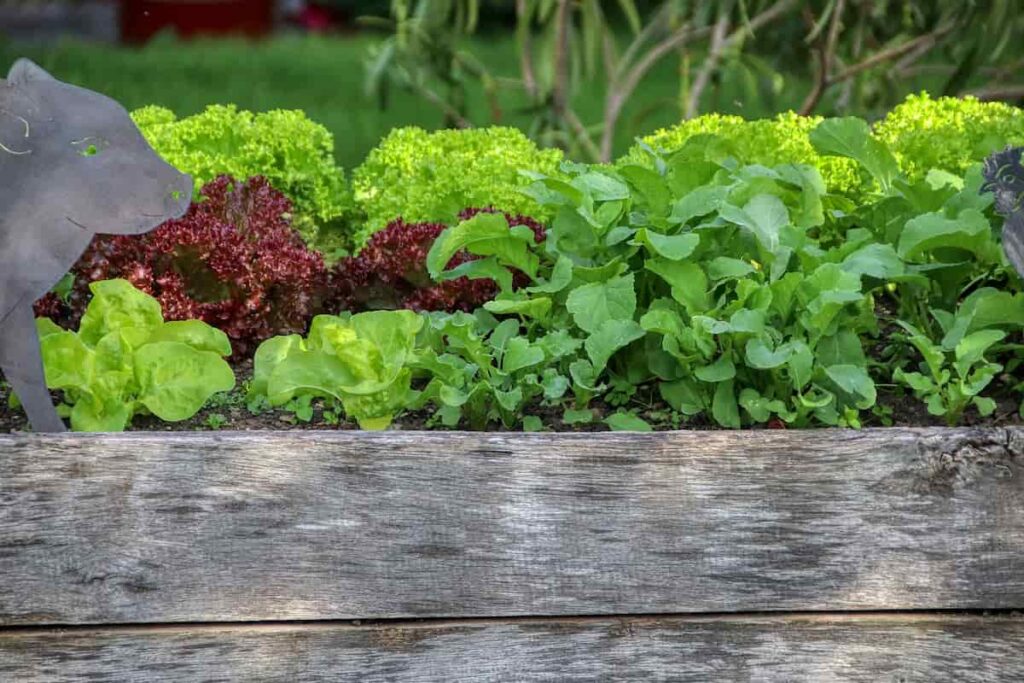
Monitor your plants for signs of rot or mold after heavy rainfall
Protecting your plants from heavy rains is monitoring them for signs of rot or mold after a storm. If you notice any indications of plant damage, immediately take corrective action. Rot and mold can cause plants to lose their leaves and flowers, resulting in reduced yields and decreased overall health. After a storm, monitoring your plants for signs of rot or mold is important.
Rot and mold can occur after heavy rain and water damage, so it’s important to check on your plants as soon as possible. Check the plants for any wilted or brown leaves. This is an indicator of rot. Look for spots where water has pooled on the ground or around the plant stems. This is an indicator of mold growth. Compare the growth of different parts of the plant to see if there is a significant difference. If there is, this may indicate that damage has occurred to specific areas of the plant.
Prune-damaged plant limbs
Protecting your plants from getting wet is protecting them from heavy rains. Prune damaged plant limbs when the plants are dry to help reduce water absorption and prevent rot. When it comes to mitigating damage from heavy rain and water, pruning is an important step. Prune damaged plant limbs when the plants are dry, as this will allow the plant to heal more quickly and minimize water entry into the wound. Additionally, pruning during dry periods can help move moisture and nutrients up to the higher branches of the plant, which can help sustain growth while weather conditions worsen.
Spread salt or pesticide to repel slugs from wet plants
Slugs are a common problem for gardeners in wet climates. One way to protect plants from heavy rains is to spread salt or pesticide on the ground around the plants. Salt makes the slug’s insides salty, and the poison will kill them. Pesticide can be used in either liquid or granular form, and it’s most effective when applied early in the morning or during evening hours when slugs are inactive. Putting salt or pesticide nearby can help repel these pests.
In case you missed it: Top 10 Houseplants to Combat Condensation and Mold in Your Home
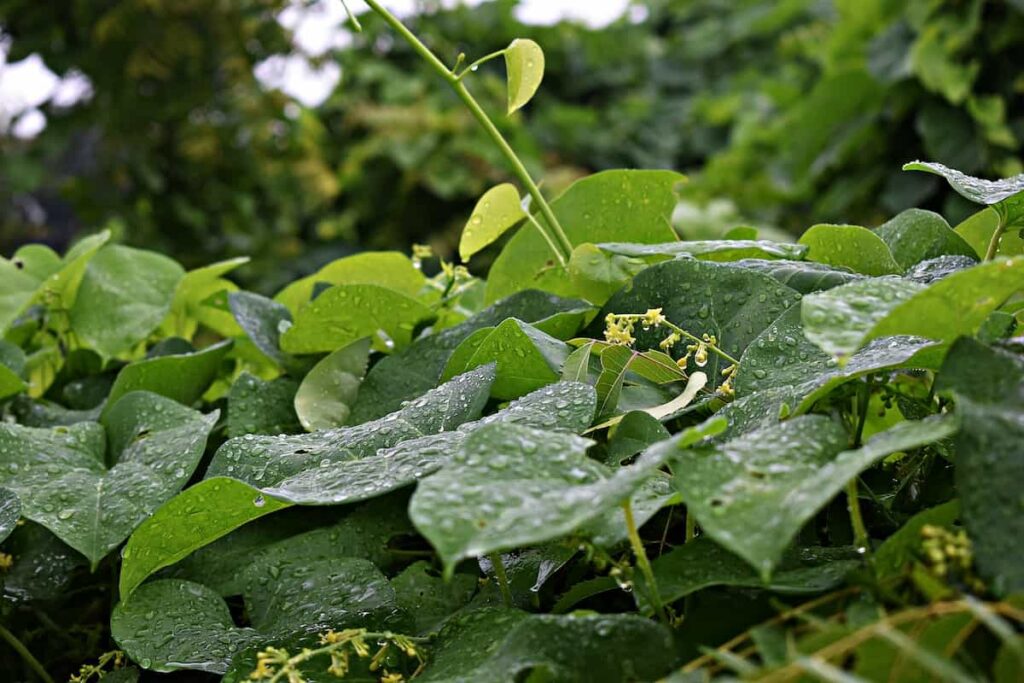
Remove saturated mulch and residue if it isn’t drying out
Remove saturated mulch and residue if it isn’t drying out. If the mulch is wet, mix 2 inches of fresh, dry mulch into the existing layer to help break up any clumps. Remove any large pieces of wood, leaves, or other material that may be buried beneath the mulch.
Conclusion
It is important to protect your plants if you live in a heavy rain area. Heavy rains can cause water damage to plants and can also lead to flooding. This causes water damage to the plant’s cells, leading to brown spots on the leaves and death. When it comes to protecting plants from heavy rains and water damage, you can do simple things to ensure your plants stay safe and healthy. Finally, keep an eye on your plants during heavy rain.
- How to Grow Hibiscus from Flower
- Plantation Ideas for Home Decoration: A Beginners Guide
- Flower Garden Designs and Layouts for Beginners
- Planting and Spacing Techniques in Papaya: A Beginner’s Guide
- Growing Gold: Essential Techniques for Planting Pineapples
- How to Make Kalanchoe Plant Bushy: Home Remedies and Solutions
- 11 Reasons Why Your Gardenia is Not Blooming: Home Remedies and Solutions
- Eco Elegance: The Guide to Designing a Drought-Tolerant Landscape
- Gardening on a Slope: Strategies for Hillside Landscaping
- Nourish and Flourish: Top Organic Mulches for Thriving House Plants
- Everything You Want to Know about Indian Mogra Flower: Discover Uses and Growing
- Green Thumb Success: Expert Tips for Cultivating Greenhouse Pumpkins All Year Round
- Maximize Growth & Flavor: The Ultimate Guide to Companion Planting in Herb Gardens
- How to Control Rhododendron Problems Naturally: Home Remedies and Organic Ways to Fix Them
- Natural Magic: The Remarkable Benefits of Cinnamon for Plants
- Best Steps to Revive Dying Tulip with Natural and Organic Treatment
- 10 Reasons Why Your Angel Trumpet is Not Blooming: Remedies and Treatment
- How to Fix Periwinkle Leaf and Flower-Related Problems: Natural Remedies and Solutions
- How to Fix Zinnias Leaf and Flower Problems: Discover Natural and Home Remedies
- Organic Steps to Induce Lemon Tree Flowers: A Comprehensive Guide
- Bloom Booster: Crafting the Perfect Homemade Bougainvillea Fertilizer
- Optimizing Growth: A Guide to Applying NPK Fertilizer for Potted Plants
- 10 Best Homemade Fertilizers for Rubber Plant: DIY Recipes and Application Method
- How to Boost Female Pumpkin Flowers: Effective Steps for More Flowers and High Yields
- Transform Your Indoor Garden: Top Benefits of Pink Salt for Houseplants
- 10 Best Homemade Fertilizers for Peacock Plants (Calathea): Easy DIY Guide
- Unlock Blooms: 9 Reasons Why Your Potted Chrysanthemum is Not Blooming
- 8 Reasons Why Your Potted Hibiscus is Not Blooming: Fix it with Simple Solutions
- Unlock Blooms: 9 Key Reasons Your Potted Frangipani Won’t Flower
- 10 Reasons Why Is My Ice Plant Not Blooming: Remedies and Treatment
- 10 Reasons Why My Potted Hydrangea Not Blooming: Treatment and Remedies
- 10 Reasons Why is My Wisteria Not Blooming: Remedies and Treatment
- 10 Reasons Why is My Goldfish Plant Not Blooming: Remedies and Treatment
- Maximize Your Space: Ultimate Guide to Balcony Gardening with Grow Bags
- 10 Reasons Why Your Iris is Not Blooming: Remedies and Treatment
- 10 Reasons Why Your Anthurium Plant is Not Blooming: Treatment and Remedies